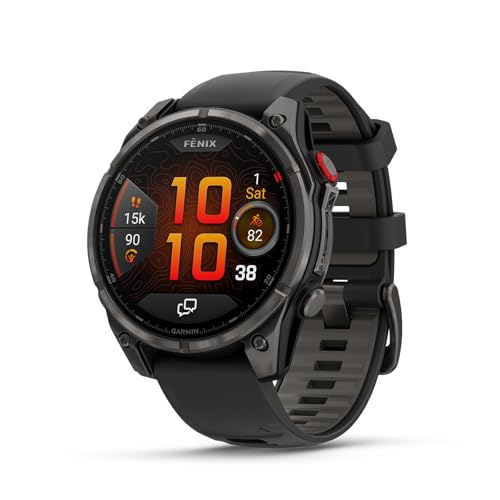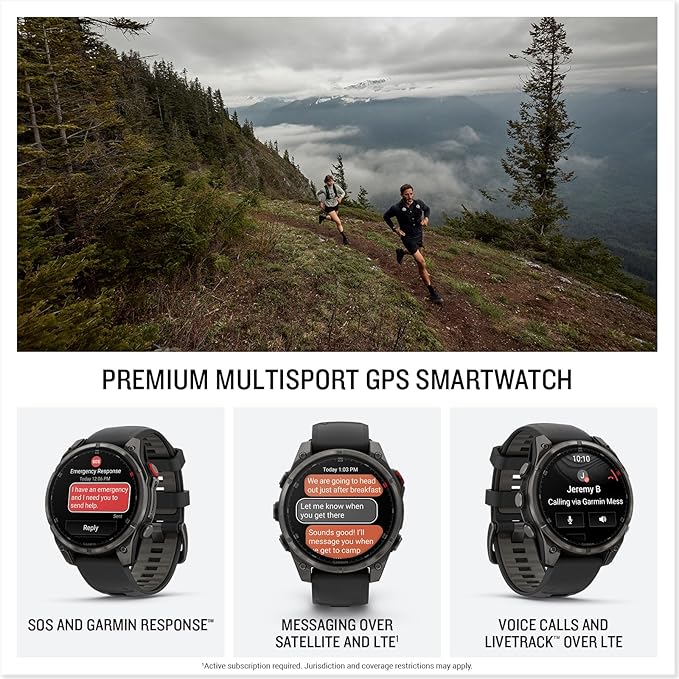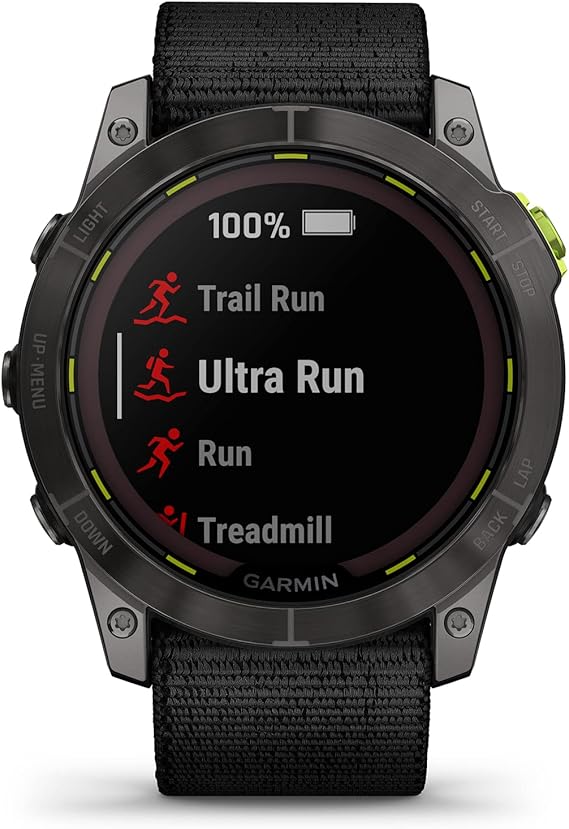Last Updated on October 10, 2025 by Luis Cooper
Suppose you’re choosing between Garmin’s newest do-everything flagship and its ultra-endurance specialist.
In that case, the decision really comes down to one question: Do you want phone-free connectivity and a brighter, more modern display, or do you like extreme battery life that shrugs off multi-day adventures?
I spent time digging into official specs, hands-on reports, and long-term testing from trusted reviewers to map the differences clearly and help you pick the right tool for your miles, mountains, and races.
Below, I break it down by what you’ll actually notice on your wrist: display and size, mapping and GPS, training tools, battery life, safety and connectivity, and comfort.
I finish with crisp pros/cons and a quick spec table.
Garmin Fenix 8 Pro vs Enduro 2 — Full Review:
The Elevator Pitch:
Fenix 8 Pro (2025):
Adds LTE and two-way satellite messaging on the watch, plus brighter screens, including a 51 mm MicroLED option.
It’s the most connected Fenix yet, built for athletes who want live tracking, quick check-ins, and SOS without carrying a phone.
Enduro 2 (2022–present):
The battery-life king. Transflective MIP screen, solar, full maps, multi-band GNSS, and Garmin’s big flashlight—designed to last weeks in watch mode and hundreds of hours in GPS modes. Ideal for stage races, FKTs, thru-hikes, and desert ultras.
Display and Sizes:
Fenix 8 Pro now comes in 47 mm (AMOLED) and 51 mm (MicroLED).
The AMOLED model is already bright and punchy; the MicroLED takes daytime visibility to another level while keeping rich color and contrast.
Reports cite up to ~4,500 nits on the MicroLED unit—overkill for indoor use, but brilliant in high alpine glare or snowy conditions.
Note that there’s no smaller 43 mm this generation, largely due to antenna space for LTE/satellite.
Enduro 2 sticks with a transflective MIP display.
It won’t “wow” indoors, but it’s unbeatable for readability in full sun and sips power compared to emissive screens.
If you value legibility at noon on exposed ridgelines and want maximum endurance, this tech still makes sense.
Takeaway:
Fenix 8 Pro wins for modern visuals and night readability; Enduro 2 wins for simplicity, glare-proof clarity, and battery thrift.
Both watches deliver multi-band GNSS, full-color topographic maps, SatIQ auto-mode for power/accuracy balance, NextFork trail prompts, and robust routing.
In independent testing, when Enduro 2 launched, it matched the best in the market for GPS reliability—performance that still holds up today for trail and city mixes.
The Fenix 8 Pro continues that standard; the connectivity additions don’t reduce mapping depth.
Takeaway:
It’s a draw for map depth and GNSS quality.
Pick based on battery and connectivity needs.
Training tools and health metrics:
Garmin’s software stack now flows widely across lines.
Hence, both watches share the training and recovery “greatest hits”: Training Readiness, Endurance Score, Hill Score, Running Power, and Running Dynamics (with compatible sensors), cycling metrics, strength workout tracking with set editing, a deep sports profile catalog, and the Morning/Evening Reports.
The Fenix 8 Pro arrives with the latest UI refinements (quick app list swipe, calculator, more keyboard layouts, smart wake, and more) rolled in at launch; much of this has since trickled to other high-end models, too.
Takeaway:
For pure training features, both are loaded.
Fenix 8 Pro has the freshest interface polish out of the box; Enduro 2 remains a powerhouse for structured training over very long timelines.
Battery life: The deciding factor for many
This is where the Enduro 2 still dominates.
Garmin’s official battery sheet lists up to 34–46 days in smartwatch mode (with solar), 110–150 hours in GPS-only, 78–96 hours in all-systems, 68–81 hours in all-systems + multi-band, and 714 hours in max-battery GPS with solar.
Expedition mode stretches to 172 days in ideal sun.
In short, you can plan expeditions around this battery.
The Fenix 8 Pro offers very good endurance for an AMOLED/MicroLED, but adding LTE and satellite will draw more power when active.
The 51 mm MicroLED variant is the brightest screen Garmin has shipped and—per hands-on—carries a 10-day claim in smartwatch mode (about 4 days with always-on enabled).
Standard 47 mm AMOLED models go longer than prior Fenix OLEDs, but not into Enduro territory.
Takeaway:
If your calendar says 100-mile ultra, stage race, or multi-week trek, Enduro 2 is the practical pick.
If your runs are measured in hours, not weeks, Fenix 8 Pro’s battery is more than fine—especially if you want connectivity.
Safety and phone-free connectivity:
This is the Fenix 8 Pro’s headline. It brings LTE-M and two-way satellite messaging into the Fenix family.
That means LiveTrack, location check-ins, text/voice messages, and SOS, even when your phone stays home.
There are limitations: services run through Garmin Messenger/inReach rather than standard carrier SMS/voice, so your contacts interact via the app (no separate watch phone number).
It’s aimed at safety and “I’m OK” communication during workouts, not replacing a full smartphone. Subscriptions apply.
Enduro 2 doesn’t have on-watch LTE or satellite.
It still supports incident detection, live tracking, and SOS when tethered to your phone, and it includes Garmin’s super-bright LED flashlight, which has proven genuinely useful for trail marking and camp tasks.
Takeaway:
If you want phone-free safety and messaging, the decision tilts hard toward Fenix 8 Pro.
Comfort, durability, and use cases:
Both watches meet Garmin’s rugged standards with strong water resistance and durable case materials.
Enduro 2’s lighter MIP display and solar bezel help keep weight and thickness manageable over multi-day wear.
Fenix 8 Pro’s MicroLED unit is thicker and heavier; the 47 mm AMOLED balances weight and brightness better for daily training.
Who should buy what?
-
Choose Fenix 8 Pro if you want the most connected Garmin, brilliant screens, and you regularly share live tracking, leave your phone behind, or value SOS/messaging anywhere.
-
Choose Enduro 2 if you want the least charging and most time away from outlets, with mapping and training depth intact. It’s still the “forget your charger” watch.
Spec:
| Fenix 8 Pro (47 mm) | Fenix 8 Pro (51 mm MicroLED) | Enduro 2 | |
|---|---|---|---|
| Display | AMOLED, very bright | MicroLED, ~4,500-nit class | Transflective MIP |
| Case sizes | 47 mm | 51 mm only | 51 mm class |
| Connectivity | LTE-M, two-way satellite, BT, Wi-Fi | LTE-M, two-way satellite, BT, Wi-Fi | BT, Wi-Fi (no LTE/sat) |
| Maps/GNSS | Full topo, multi-band GNSS, SatIQ | Full topo, multi-band GNSS, SatIQ | Full topo, multi-band GNSS, SatIQ |
| Battery (headline) | Multi-day (varies by settings) | ~10 days smartwatch (≈4 days AOD) | 34–46 days smartwatch, 110–150 h GPS (solar) |
| Flashlight | Yes | Yes | Yes |
| Notable | Latest Garmin UI/keyboard extras | Brightest Garmin screen; thickest too | Battery king; expedition-ready |
Which one should you buy?
Get the Fenix 8 Pro if you value real phone-free safety and messaging—you train alone at odd hours, coach athletes remotely via LiveTrack, or simply want one less reason to bring your phone.
The screen is easier on the eyes at night and indoors, and the new UI polish makes day-to-day use smooth.
Just budget for the subscription and expect shorter run-time when LTE/satellite are active.
Get the Enduro 2 if you chase the longest battery first.
For multi-day races, remote treks, or long training blocks where charging is inconvenient, nothing in Garmin’s lineup touches its stamina.
You still get the maps, GNSS, training depth, and the underrated flashlight that saves your bacon at camp and on dark descents.
Related Articles:
Samsung Galaxy Watch 7 vs Apple Watch Series 9







